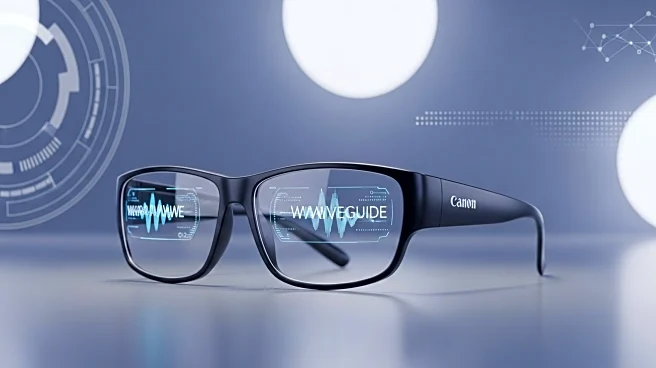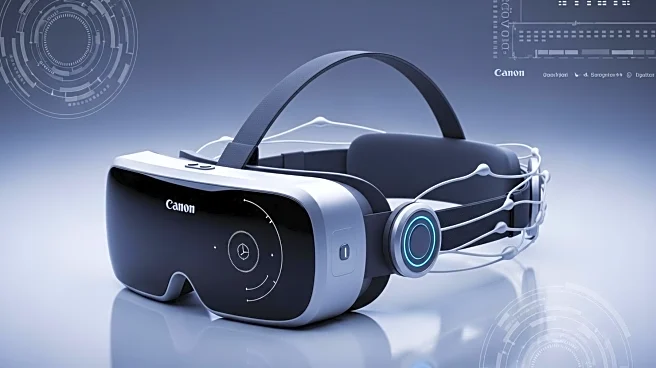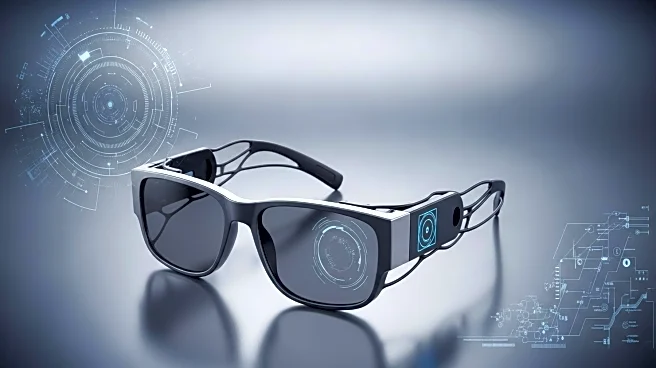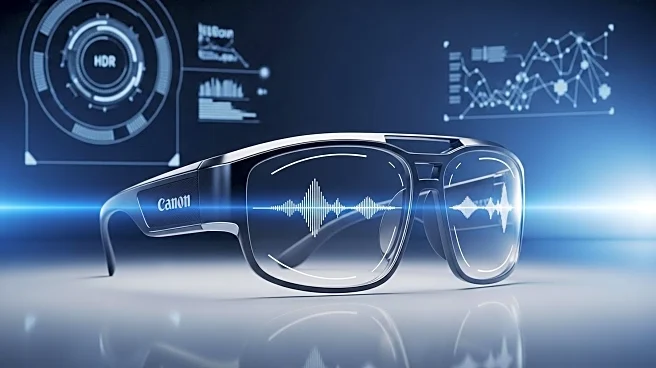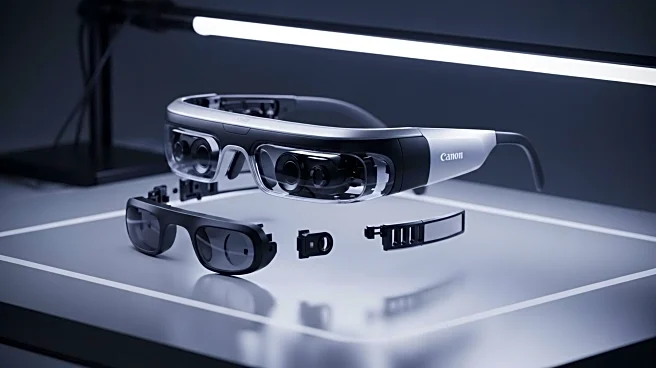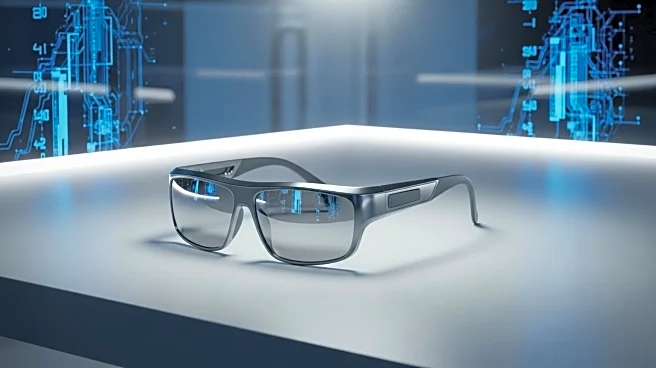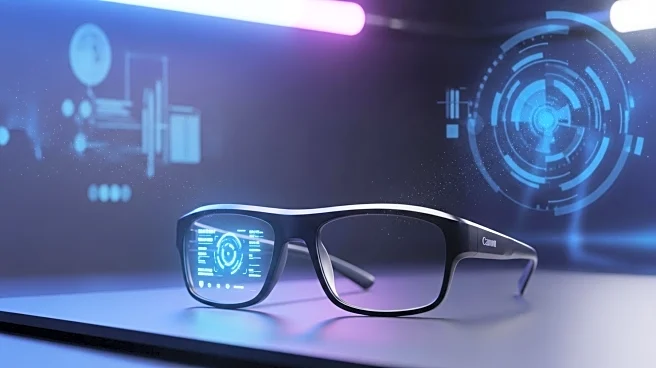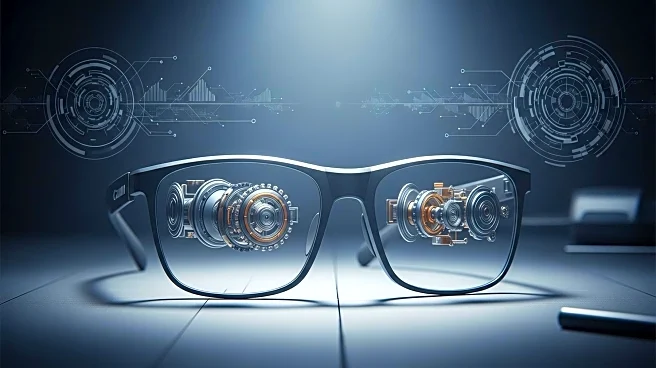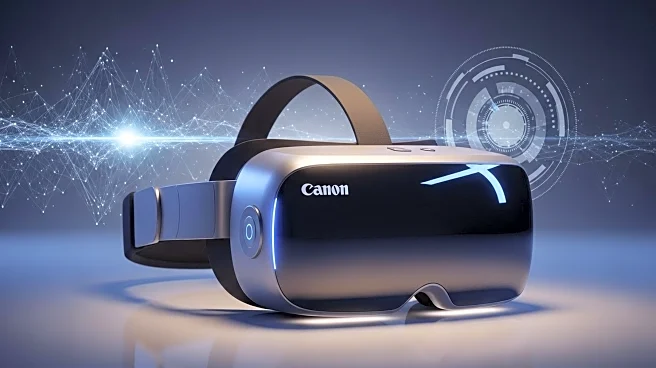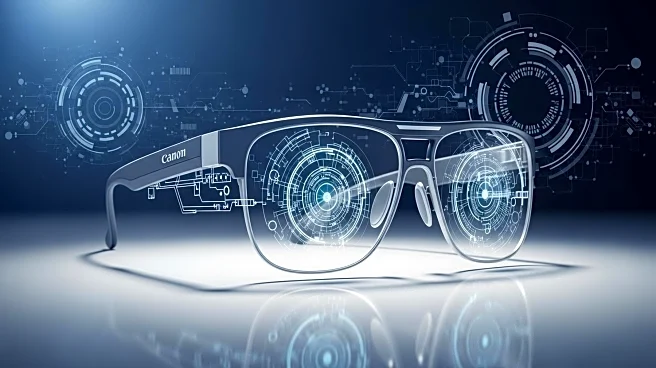What is the story about?
What's Happening?
Meta's Ray-Ban Display glasses have been subjected to a detailed teardown by iFixit, revealing the sophisticated waveguide technology that powers their floating display feature. The glasses incorporate a geometric reflective waveguide developed by Lumus, which is designed to enhance optical efficiency and minimize light leakage. This technology marks a significant advancement over traditional diffractive waveguides, commonly used in augmented reality applications. The glasses also feature a liquid crystal on silicon (LCoS) projector, which reflects images back to the user's eye. Despite the technological innovations, the glasses have a low repairability score, with challenges in finding spare parts beyond the battery.
Why It's Important?
The integration of advanced waveguide technology in Meta's Ray-Ban Display glasses represents a significant leap in augmented reality capabilities. By improving optical efficiency and reducing light leakage, these glasses could enhance user experience in AR applications, potentially influencing the future design of smart glasses. However, the low repairability score highlights a common issue in consumer electronics, where advanced technology often comes at the expense of ease of repair. This could impact consumer satisfaction and sustainability, as users may face difficulties in maintaining or repairing their devices.
What's Next?
As Meta continues to innovate in the field of augmented reality, the development of more efficient and user-friendly smart glasses is likely to be a priority. The company may focus on improving the repairability of future models to address consumer concerns. Additionally, advancements in waveguide technology could lead to broader applications in other AR devices, potentially influencing industry standards and encouraging competitors to adopt similar technologies.
Beyond the Headlines
The use of geometric reflective waveguides in smart glasses could have broader implications for the AR industry, potentially setting new benchmarks for optical performance. This technology might also inspire further research into alternative waveguide designs, fostering innovation in the field. Moreover, the challenges associated with repairability could spark discussions on the balance between technological advancement and sustainability, influencing future product designs.
AI Generated Content
Do you find this article useful?
